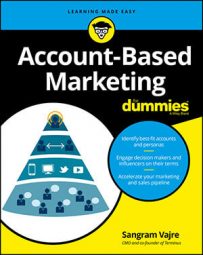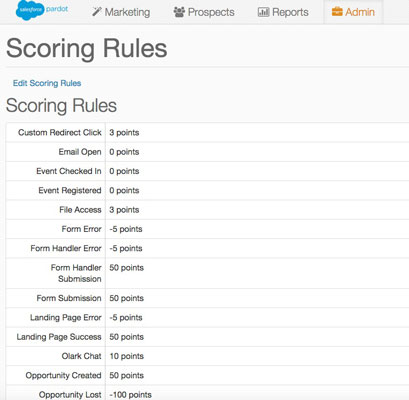Marketing automation comes into play as it gives you, the seller, insights into what your buyer is looking at. It levels the playing field. Marketing automation removes the manual process of trying to determine whether your accounts are ready to move to the next phase of the purchase decision. Using data from their activities, you know whether your accounts are ready to buy. You know this through scoring and grading.
Scoring based on activities
Marketing automation has a tool to gauge the level of engagement for each of your contacts. This is called giving the contact a score. Scoring is done by assigning points to each of your marketing activities. Each marketing activity is worth a certain amount of points. You set scores to see how interested your contact is in certain content. This tracks buyer behavior with your marketing activities. Examples of marketing activities to score include- Time viewing your site
- Pages viewed
- Email opens
- Clicks to content
- Content downloads (completing a form to download a whitepaper, ebook, or case study)
Negative points are associated with some activities. This is called scoring degradation. Score degradation is the process of lowering someone's score to make sure it's correctly portraying whether the account is ready to move forward. If the contact isn't ready to buy, you can downgrade their score in your marketing automation system to give them a negative score. If they're inactive for a certain period of time, you can also reduce their score in the MA system so you are only nurturing the most active contacts in your target accounts.
Using a negative score helps to ensure these accounts don't get forwarded as sales qualified accounts (SQA). If, for example, your SDR has just completed an initial discovery score with a marketing qualified account (MQA), and the contact wasn't ready to move forward, the SDR can downgrade the contact's score to remove them from future marketing activities.
Combining scores for a single account
With traditional lead-based marketing, you would look at the score of a single contact to see whether he or she was ready to move forward in the purchase decision. In account-based marketing, you're recognizing that more than one contact is involved in the purchase, so you need to look at scores for all the contacts in your target account.You take these individual contacts' scores and aggregate them into a comprehensive score. If you were selling to other business-to-business (B2B) marketers, you would look for scores in marketing job roles in the account. By adding up the scores for all the contacts in the marketing team, you can see engagement within the whole account.
The following figure shows the scores of multiple contacts in an account.
Grading based on best fit
Scoring and grading are easily confused. A score lets you know whether the contact is ready for sales but the grade is used to determine how well the contact fits within your ICP and persona criteria. Grading criteria include- Company size (employees and revenue)
- Industry (outside your vertical)
- Job title (role and responsibilities)
- Technology used
You have a list of Tier A, B, or C accounts. While the Tier B or C accounts technically aren't a perfect fit with your ICP criteria, if the score is high and they're demonstrating interest in your product or service, you can still attempt to do business with them.
Set up grading rules for specific personas. You created personas to identify the qualities of your best-fit users. You can match your persona criteria to determine what would qualify as a contact within a Tier A account. These contacts automatically would be added to a drip email program when they come to your site.
If you're using an account-based marketing platform for targeted advertising to your contacts, you can draw these personas into a specific landing page. Set your rule from there to add them to the email nurture program.You can set up these rules so your competition can't access your content. "Block anyone from ACME Corporation from downloading the whitepaper." After you identify these competing companies, you should create a list and give all the contacts in these companies a grade of an F, because you know they will never purchase from your company.



